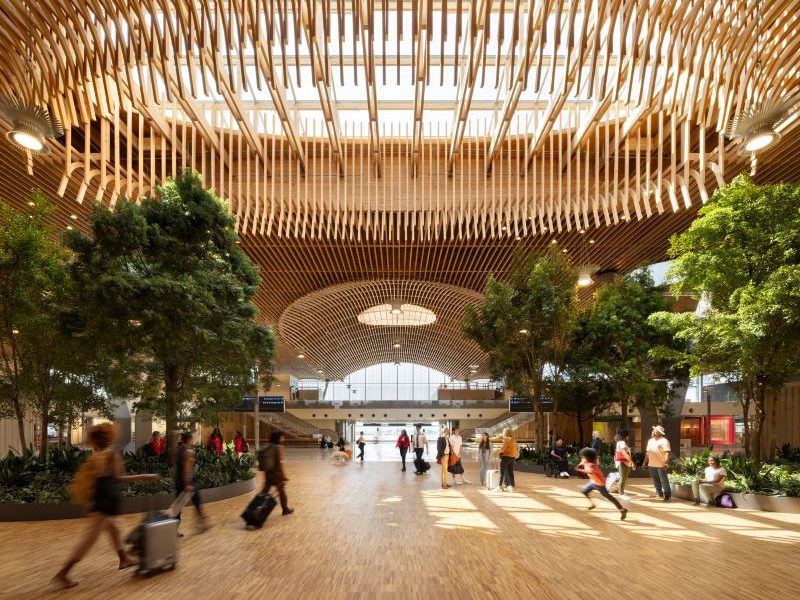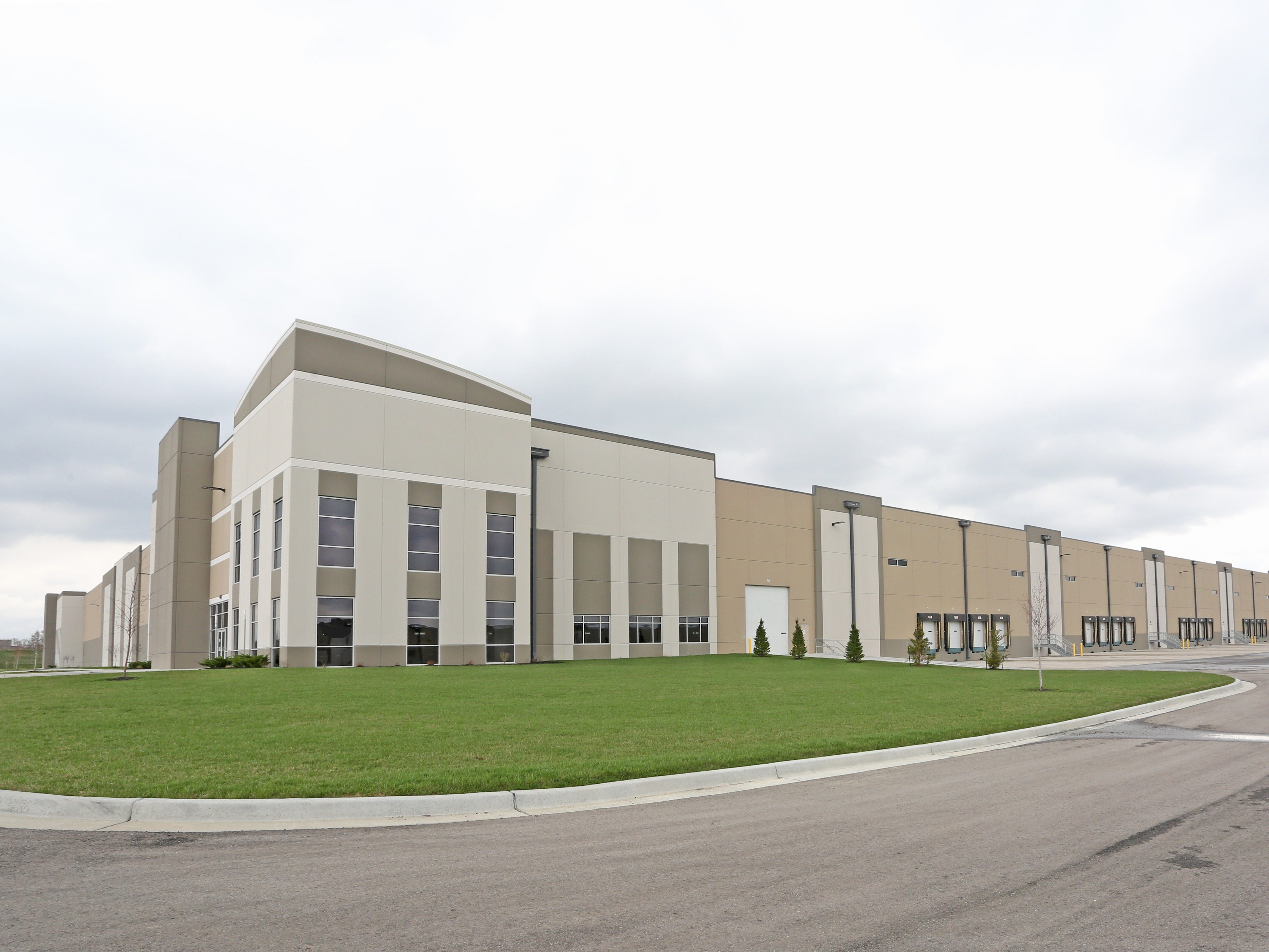What’s Defining Office in 2025?
Corporations are reevaluating office space utilization to meet employees' demand for an experience. What does that mean? Here are the top trends in office placemaking.

As the corporate landscape continues to evolve in response to new realities, the office sector is undergoing a significant transformation that reflects the changing dynamics of the workforce and tenant expectations.
The hybrid work model has firmly taken root, prompting organizations to reevaluate their approaches to office space utilization.
“One can pull different data points to highlight stats they want to focus on, but my point would be that space demand is different and the market will need to adjust,” observed Peter Kolaczynski, associate director at CommercialEdge. This underscores the urgent need for adaptability in an environment marked by fluctuating occupancy rates and diverse employee needs.
The evolution goes beyond merely addressing immediate challenges. It signals a profound reimagining of office spaces, merging functionality with an emphasis on employee wellbeing and collaboration. As stakeholders look ahead, they recognize that today’s tenants prioritize not just location but also engaging, experience-rich environments.
Employers are increasingly favoring buildings with unique characters, reflecting a shift toward spaces that inspire creativity and foster connections among employees, according to Ted Koltis, head of real estate at Columbia Property Trust.
Key forces at play in 2024
In 2024, the office sector underwent multiple changes, largely driven by evolving workplace policies and persistent vacancy rates. Koltis noticed a marked push toward return-to-office mandates among large corporations, fostering a gradual uptick in office demand.
“Top companies realize the benefit of having their teams together in person. And, in response, employers recognize the importance of creating spaces where their employees want to be day in and day out,” Koltis said.
READ ALSO: Creating the Ultimate Employee Experience
However, challenges persist. Physical office occupancy remained stagnant at around 50-55 percent throughout the year, reflecting the enduring influence of hybrid work, according to Kolaczynski. “Our relationship with the office has fundamentally changed,” he told Commercial Property Executive, suggesting a need for long-term adaptations.
High vacancy rates, exceeding 17 percent in November, coupled with negative net absorption, were among the highlights for 2024 for Doug Ressler, manager of business intelligence at Yardi Matrix, who attributed this to an oversupply of new space. As a result, last year saw firms repurposing underutilized buildings into residential units, a trend linked to available financing and shifting space demands, though Ressler believes that conversions are not a complete solution.

On a more optimistic note, Ariel Bentata, founder & managing partner at Accesso, commented on the emergence of speculative leasing, with tenants increasingly favoring move-in-ready spaces as uncertainty looms. He also observed tenant expansions in response to enforced return-to-office policies, marking an encouraging shift compared to recent years.
Meanwhile, capital markets have been giving off mixed signals. Although the Federal Reserve’s rate cut in September spurred some investment activity, capital availability remains limited. Bentata explained that while the CMBS market is gradually improving, restrictive terms are curbing broader refinancing opportunities.
Altogether, the office market’s path forward was and remains complex, marked by the interplay of policy-driven demand increases, lingering hybrid models and regional disparities.
“While some markets, particularly in Florida and South Carolina, showed signs of recovery with increased rents and new developments, other regions continued to struggle with high vacancies and low preleasing commitments. These shifts reflect the ongoing transformation in how and where work is conducted, influenced by economic conditions, technological advancements and changing employee expectations,” Ressler noted.
The future of office stays flex
As the office sector heads into 2025, its evolution will continue to be shaped by the hybrid work model, demanding flexibility and adaptability across markets. Koltis anticipates a “pendulum swing” back toward growth in office demand, particularly as companies expand in sectors like law and finance. He is even positive about previously challenged markets, noting that Columbia’s 650 California Street property in San Francisco’s Financial District has surged to nearly 90 percent occupancy. This trend is echoed in the tech sector, with AI company Harvey doubling its footprint in New York City shortly after establishing a presence.
While growth is expected, flexibility remains a central theme. The rising demand for flexible workspaces, with hot-desking and hoteling systems allowing companies to adapt to hybrid work without needing a full desk-per-employee layout, enables employees to access office space as needed, making traditional office arrangements more efficient and minimizing unused areas, Ressler believes.
“There was a lot of talk in the early days of return-to-office that real estate footprints could be trimmed because of staggered hybrid attendance. We are not seeing this play out,” said Ressler. “Many organizations are choosing specific days for everyone to be present, and while strategies exist to manage peak demand, significant savings are largely not being achieved.”
So offices are evolving, with many organizations moving away from 1:1 desk assignments and embracing more focus spaces and collaboration areas, according to John Capobianco, creative director & senior principal of client solutions at office space workplace strategist, design and construction firm Unispace.
READ ALSO: Flexible Design for CRE Success
Today, the focus is on adaptable environments and team spaces. Many office designs are gravitating toward “plaza” and “park” models, creating collaborative zones and event spaces to foster interaction. This aligns with a broader emphasis on technology integration, with smart building solutions and cloud-based tools helping manage space usage and streamline operations for a hybrid workforce, Ressler noted.
And as workplace needs evolve, Class A spaces are expected to remain in high demand due to their amenity-rich setups. Bentata expects that hybrid models will push smaller and midsized tenants to expand their footprints more actively, while larger corporations will continue assessing their long-term space needs.
“It will be interesting to see if employer return-to-office mandates significantly impact office occupancy rates. While some companies are calling employees back to the office, others are aiming to attract talent by offering remote work options—yet enforcing these mandates continues to be a challenge. The overall outcome remains uncertain,” according to Damon Juha, real estate practice vice chair of law firm Saul Ewing.
2025 office trends and predictions
The office sector is poised to navigate a rapidly shifting landscape as companies strive to adapt to new realities and changing workforce needs. Flexible workspaces that prioritize open, collaborative areas rather than traditional fixed desks will better serve companies aiming to cultivate a dynamic office environment.
Chip Clarke, chief revenue officer at Transwestern, describes this as the industry’s transition from the “flight to quality” to a “flight to experience,” positioning office environments as rich in amenities but also rich in activities and human interaction.
Tenants are no longer just looking for high-quality buildings. They seek spaces that offer meaningful experiences and foster personal connections.
“Office tenants are increasingly focusing on location and amenities to encourage their employees to return to the office,” said Scott Sherman, founder & principal of Torose Equities. “Consequently, Class A office spaces are expected to outperform older Class B and C properties, especially in areas where the office market is struggling. Property owners which proactively invest in enhancing common areas will likely see significantly better performance compared to those who do not.”

And as office owners continue to modernize their buildings to appeal to more users, committing to green building practices to achieve long-term cost efficiency is also a huge focus. Ressler identified an increase in sustainable office practices as a top trend, expecting energy-efficient buildings, green certifications and eco-friendly materials to become standard.
Technological advancements will also transform the office landscape, with smart building solutions and AI-driven management systems optimizing operations and enhancing employee experience. This technological shift will help create more efficient and adaptable work environments, experts agree.
At the same time, recent research from Unispace found that among employees whose organizations have implemented AI, 49 percent report an increase in collaboration, while 34 percent indicate a decrease. While keeping pace with the effects of emerging technologies on the workforce can often feel like a continuous challenge, Capobianco underscores the need for flexibility and adaptability in design.
Geographic shifts will also influence market dynamics as companies consider satellite offices in suburban or rural areas to bring the workplace closer to employees’ homes. Bentata suggests that a favorable interest rate environment will attract capital back into the sector, enabling companies to address new demands and grow into larger spaces.
As the office sector evolves, creativity in space utilization will also gain traction. Kolaczynski notes a growing acceptance of office conversions as a viable option, driven by declining office values and increasing government incentives. This trend suggests that more buildings will pursue adaptive-reuse strategies. Additionally, coworking spaces are expected to take on a more prominent role as businesses refocus and adapt to new demands.
READ ALSO: Additional CRE Trends for 2025
Kolaczynski anticipates a rebound in construction, particularly for boutique or “jewel box” high-end office spaces with smaller footprints located in highly desirable areas, indicating a market where these ventures can be financially sustainable.
Strategic priorities for CRE stakeholders
Commercial real estate investors are adopting a variety of strategies to navigate the changing office sector landscape going forward. Priorities include creating hospitality-rich spaces, boosting inclusivity and strengthening environmental commitments.
Key to this transformation is Clarke’s “flight to experience,” prompting owners to ask, “How can we create the best workplace experience for our people?” To that end, Transwestern has introduced a director of hospitality to ensure office spaces deliver engaging, client-focused environments, reflecting an industry-wide commitment to transforming the traditional office model into something more dynamic and people-centric.
“All data points suggest workplaces must prioritize connection, enablement and adaptability, striking a balance between concentration, connection, variety and choice. As an industry, we have been speaking about the ‘inclusive’ workplace for some time, but there is a real effort to understand what inclusion actually means beyond providing an all-gender restroom. It has a real impact on talent recruitment, brand perception and an employee’s wellbeing,” Capobianco noted.
Thus, creating a compelling workplace culture will be crucial. Companies will emphasize diversity, equity and inclusion initiatives to attract and retain talent. The office will be seen as a hub for fostering community and collaboration, Ressler believes.
Ressler also pointed out that many investors are diversifying their portfolios by decreasing their exposure to traditional office spaces and increasing investments in alternative sectors, including industrial properties, multifamily housing and life sciences. These sectors are viewed as more resilient and capable of delivering better returns in the current market environment.
Investors are also increasingly adopting property technology solutions, leveraging AI, cloud-based systems and smart building technologies to enhance the management of commercial properties. Such technologies are instrumental in reducing operational costs and addressing the evolving needs of tenants.
In light of ongoing economic uncertainty, a focus on optimizing cash flows has become crucial for investors. Many are utilizing AI-informed financial management systems to ensure liquidity and position themselves to seize market opportunities when asset prices decline.
Furthermore, geographic diversification is becoming a priority, with investors targeting markets that exhibit signs of recovery and growth, particularly in regions like Florida and South Carolina. Collectively, these strategies reflect a proactive approach to addressing the challenges and capitalizing on opportunities within the commercial real estate sector.
“The three-word mantra of commercial real estate has long been location, location, location. But now it’s evolving into location, quality, experience. Owners, buildings and asset service providers who fully understand and embrace this shift will be best positioned for success as we move through 2025,” Clarke concluded.








You must be logged in to post a comment.